During Exercise Diamond Storm 2019 ASO was invited by the Royal Australian Air Force Public Affairs Office (PAO) to capture imagery and be given a tour of a United States Air Force Boeing B-52H Stratofortress. Also we were to be briefed by senior RAAF and USAF representatives to give us an overview of the B-52 and its prescence at Exercise Diamond Storm 2019 prior to the tour.
Arriving at RAAF Base Darwin front gate we were met by RAAF PAO team and transported to the Bomber Replenishment Apron (BRA) where two of the Boeing B-52H Stratofortress’s have been operating from.
Many have had the opportunity to see a B-52 up close but it is still a daunting beast to see no matter how many times. With a wingspan of 56.4m (185′) and length of 48.5m (159′) the ‘BUFF’ takes up a considerable amount of room, let alone two of them parked at the BRA. Some more fun facts about the B-52 are at the bottom of the article.
The two aircraft are Boeing B-52H models, 60-0060 ‘Iron Butterfly’ and 61-0035 ‘Witches Brew’, both from the ‘Bomber Barons’ – the 23rd Bomb Squadron as part of the 5th Bomb Wing based at Minot Air Force Base in North Dakota.
Prior to our static photo opportunity we are briefed by Wing Commander Parsons, CO of No.13 Squadron, RAAF Base Darwin and Lieutenant Colonel Burrell from the United States Air Force (Pacific Airforces).
WgCdr Parsons is introduced and talks about the B-52 presence from a local point of view:
” The B-52′ s have been flying since 1952, they are an amazing aircraft. We have them here in Darwin about 4 times a year and they are here at Diamond Storm to help our people train with them, so they get used to co-operating with each other. The B-52’s are an iconic aircraft, we have one in the Heritage centre outside of base and they have a long history with Darwin.”
“It is incredibly important to have the interoperablility (with the United States) as these are the people we work with, so being able to operate seamlessly is important and these opportunities like Diamond Storm enable us to do that.”
“One of the things with Diamond Storm, apart that we have these wonderful aircraft and we can operate the way we do, is that it is bonus for Darwin. About 2000 people are here and with that comes the spending on hire cars, fuel, hotel accommodation and getting out and socialising. We do appreciate that Darwin puts up with a bit of noise during the exercise period so we try to put something (money) back into the community to say thank you.”
With that we are handed by FltLt Andersen PAO over to Lieutenant Colonel Burrell from the United States Air Force(Pacific Airforces)
“Exercise Diamond Storm has been great for us – it provides a unique opportunity for us to come and train along side one of our best allies, partners and friends in the region. It’s through this training we gain interoperability, enhanced air cooperation and that leads to regional security and stability. This allows us to promptly and quickly respond to any natural disasters that may occur and it also allows us to operate, integrate and train effectively together.”
“Whats unique here in the Northern Territory is we have access to ranges and airspace that we don’t have anywhere else in the Pacific. So coming here and training with the Australian Airforce has been an amazing opportunity for us and we appreciate it.”
“We’ve brought two B-52’s from Guam, where we are currently deployed to. The aircraft ’60’ (60-0060) and ‘1035’ (61-0035) were both built in 1960 and 1961. These aircraft have been flying two ‘balls’ a day – two flights per day – and we have been here two weeks so they have performed very well. Tomorrow is our last day and we will take them back home to Guam and continue our Continuous Bomber Rotation (CBR) here in the Pacific.” I notice he is sporting the unique 23rd Bomber Barons 2019 Continuous Bomber Rotation (CBR) patch on his right arm.

As for the high pace set during the squadron’s Pacific deployment? – “It’s a lot of work for our maintainers, our maintenance professionals keep the airplanes ready to fly. For our two aircraft out here, we’ve brought about fifty maintainers, and they typically put in about eight to ten hours to get the aircraft ready to fly. We have six B-52’s deployed to USINDOPACOM (United States Indo-Pacific Command) right now and we’ve been flying an average of about 52 sorties per month. Our mission capability rate stays in the 70%-80% range which means we are consistently flying them.”
“The B-52 is a true workhorse, it was designed for the Cold War but since then we’ve updated it, integrated the avionics, and so it’s capable of any operation across the full spectrum of warfare. It is a tested design and even though it is old, it gets the job done.”
“Diamond Storm has been amazing, we came in here two weeks ago not knowing what to expect. We have brought out some very new aircrew who have just got mission qualified about three weeks ago, so this is their first real operation out here in the Pacific and they have learned a lot from our Australian counterparts. This is the first large force exercise where we’ve put them in the aircraft, to go fly alongside the F-18’s, Growlers and Classic Hornets, and they’ve done very well.”
“We feel thay we have learned a lot from the Australians as we have integrated with them, and been part of their strike tactics – it’s been really good training. Australia is one of our oldest allies and partners in the region and we have fought alongside in every major conflict since World War One, so that relationship is not only important but enduring. So us coming here and training with the Australians is key to our partnership in the region and we want to maintain that.”
Wrapping up LtCol Burrell says “We’re just happy to be here and thank you for the opportunity to talk to us, we appreciate it.”
After wrapping up the interviews we are escorted over to the forward section of ‘Iron Butterfly’ where the aircraft has been ‘sanitised’ for our tour. This involves concealing any sensitive equipment within the aircraft and isolating the Electronic Warfare Officer compartment from photography.
Looking up at the side of the crew compartment I again notice the wrinkled appearance of the B-52 skin that I have seen many times before. Captain Tovado of 36th Expeditionary Aircraft Maintenance Squadron introduces himself and sees where I am looking – “Thats due to crew compartment pressurisation, the airplane skin relaxes or expands when on the ground” Apparently it is quite a common question asked by the public.
Soon they are ready for us to climb up the crew hatch/steps, and the world goes rather quiet after the roar of the portable air-conditioning rig parked next to the BUFF – and it is pleasantly cool inside.
Looking forward is the lower deck compartment with two downward firing ejection seats where the Radar Navigator (LH) and Navigator (RH) positions reside. Sitting in the left seat is First Lieutenant Collamatti who breifly explains many of the systems across the complex looking panels. I point to the yellow ‘special weapons’ handles in the roof – he laughs and says “Ahhh…we don’t use those any more, like some of those panels over that (my) side. There are some that are so redundant we don’t use as they haven’t been operational for years”
He points out the dual Honeywell inertial navigation system, and explains the RN role using the Offensive Avionics System is to identify and validate targets using the various sensors and targeting pods. The B-52 is fitted with a Northrop Grumman strategic radar, Honeywell radar altimeter, Smiths attitude heading and reference system, Tercom terrain comparison, Doppler navigation radar, and IBM / Raytheon bombing and navigation system.
The B-52 carries the Sniper Advanced Targeting pod on a right wing station and is equiped with an electro-optical viewing system (EVS) – a forward-looking infrared (FLIR) in the starboard chin turret and a low light level television camera (LLTV) in the port chin turret. The RN develops the attack plan using the different weapon types whether they are unguided or guided munitions like the JDAM or even mines and of course cruise type weapons.

Sniper Advanced Targeting Pod on the right wing – the USAF is investigating a move to a fuselage mount to improve the pod’s field of view.
Climbing the ladder to the upper deck reveals the Electronic Warfare Officer (EWO) station to the rear which has been darkened and is off limits to us. The RH seat is the now redundant Gunners crew position but these two ejection seats do fire in the traditional direction – up. The EWO monitors and controls a range of electronic warfare equipment including a electronic countermeasures system that uses multi-band threat recognition and multiple threat jamming technology. The AN/ALR-20 radar warning system that detects and prioritises multiple threats while the AN/ALQ-122 multiple false target generator, and AN/ALT-32 noise jammer decieve the enemy. Twelve infrared flare dispensers and eight launchers for the AN/ALE-24 chaff dispenser are fitted to the B-52.
Turning to the front on the left is a basic bunk down low with the overhead area containing plumbing for in-flight refuelling. There are clear panels where crew can check fuel flow and for any potential leaks during the Air-to-Air fuel transfer process. To the right is the ‘port-a-loo’ apparently with the caveat that if you use it… you clean it, plus a bank of circuit breaker panels.
Towards the front is the blue non-ejecting jump seat often used in training (Instructor Pilots) and one of the portable oxygen cylinders that allow the crew to move about if necessary if the compartment depressurises. They can also be used should one of the crew need to walk the bomb bay gantry to the rear section 47 while in flight.
At the front are the Pilot and Aircraft Commander positions, again fitted with upward firing ejection seats that fire once the overhead hatches have blown clear.
Sitting in the pilot’s seat is Captain Draybek who tanks about flying the B-52H – “It’s a great aircraft to fly even in a cross wind” as I look at the crab wheel on the centre console between the seats. “We can slew the undercarriage 20 degrees left and right” Have you used it here in Darwin? I ask. “Yes we have, a number of times. It is quite unique to be sitting in the right hand seat and looking out the left hand pilots screen as you land. Even though the airplane is old the B-52 has gone through many upgrades to keep up with modern warfare.” He talks of the avionics upgrades including the multi-function screens that dominate the instrument panel each side of the eight sets of engine guages. “It’s not that compex once you get used to it – and there are two of us up front” he says.
Captain Draybek and I chat about some of the (potential) future upgrades such as new attack radars, sensors, avionics, defensive systems and crew egress, plus maybe a new flight data recorder. He likes the re-engine program that is being investigated – “The United Sates is looking at replacing the TF-33’s, maybe a choice between the P&W (2000) or the Rolls-Royce (RB211) – they have to fit in the existing engine nacelles. They should give up to 30% improvement in fuel efficiency”
I ask if the Barons have employed any live weapons during Exercise Diamond Storm – “No we haven’t. We have simulated our weapons during the exercise” He has enjoyed the airspace that Australia offers and working with the Australian Air Force.
I enquire about the refuelling profile of a flight from the US to Andersen AFB on Guam in the western Pacific. He explains that -“We normally do that about three times – take off and refuel off the west coast of the States then meet another tanker near Hawaii and another to the east of Guam”
Taking a quick photo of the sister ship ‘Witches Brew’ through the front glass, I thank him for his time and hope he has enjoyed this deployment. “I sure have – much better weather” and he smiles for a last photo.
I move back to climb downstairs to exit and am amazed to later read that the B-52H has provisions for up to ten crewmembers, a basic crew of five, three instructors and two additional crewmembers. The basic crew consists of pilot, copilot, radar navigator, navigator and electronic warfare officer. The instructor crew includes an instructor pilot, instructor navigator and instructor electronic warfare officer. Finally, the gunner and tenth man positions are also available for additional seating. It would certainly be a crowded flight if all positions are filled.
A few of us gather for the external tour and while we wait we observe the Base WOD (Warrant Officer Disciplinary) having a joke with a member from the 194th Fighter Squadron – the F-15C Eagles that have accompanied the 23rd BS to Exercise Diamond Storm.
A USAF Airman 1st Class meets us and introduces himself as the Crew Chief of 60-0060. Sure enough as I look up A1C Haynes has his name adorned on the Iron Butterfly – a long time tradion in the USAF.
The Crew Chief begins our tour of the outside and says ” Much of the Avionics work is carried out by specialists but I am more the aircraft structure and systems guy. I’ve been with ’60’ a few years and really enjoy my job”
He points to the pylon under the wing – the Heavy Stores Adapter Beam (HSAB) ftted with MAU-12 Bomb Racks. The two HSAB’s give the B-52 an external carriage capability of up to 18 weapons rated up to 2000 lbs.
The Crew Chief is joined by OIC Maintenace Captain Tovado and we duck under into the massive weapons bay. Immediately standing out is the mounting system for the Conventional Rotary Launcher (CRL) – a recent upgrade that brings the B-52’s weapons bay and racks to a level that links munitions to the 1760 Aircraft/Store Electrical Interconnection System, allowing the crew to program those modern munitions mid flight, stores such as the 500-pound Joint Direct Attack Munitions (GBU 30 JDAM) or 2,000-pound JDAMs (GBU-32). “This gives the crew a greater flexibility during their mission to adapt to changing target characteristics”
The weapons bay is massive it isn’t surprising to see a camera on the rear bulkhead – A1C Haynes explains – ” Thats so the crew (RN) can check to see that all weapons have dropped that have indicated. The airplane bombing systems won’t allow a weapon to drop in an unsfe condition – if the crew loose communication with it, the bomb remains aboard” The B-52 can carry an array of weapons including the AGM-86B/C/D, AGM-129A, GBU-31 JDAM, M-117 general purpose bombs, Mk62 mines, Mk82 general purpose bombs and Mk84 general purpose bombs.
I point out the small door up on the left and the Crew Cheif tells me – “That area can be access in flight if needed – the crew can use portable oxygen bottle (the yellow one seen earlier) and walk the gantry to check out the rear compartment. Thats where the some systems are located”
I ask about the fragility of the wire insulation due to age as it becomes brittle with age – especially many decades. Crew Cheif Haynes nods and smiles – “Uhuh – yea that is an issue with older airplanes but it is looked at – fault finding with pin to pin checks in wiring looms”. Capt Tovado says “The B-52 gets inspected and maintenance approximately each 380 hours. We fly them in and do deeper maintenance and overhauls at Tinker Air Force Base in Oklahoma”
Everything on the B-52H is huge, not least the landing gear assemblies. It is often referred to as a Quadricycle undercarraige as all four sets of wheels are in pairs located close to the aircraft centerline axis. A lower speeds the aircraft relies on an outrigger wheel on each wingtip. Capt Tovado points out the difference in main wheel tyre condition – ” We have layers as tyre wear indicators in each tyre – when the wear reaches the last layer we need to change out the wheel”
Next is the long walk to the rear of the Iron Butterfly. I ask if they have brought brake chute packers with them on the deployment as not every landing uses the drag chute. “Yes we have one Packer with us but we all pitch in and help when it comes to repacking the chutes – it takes some time and they are heavy”
“We also can carry a spare prepacked chute in the aircraft. At the rear is Section 47 where we can put extra equipment like spares, Oils and Hydraulic fluids. That’s also where we can store the spare chute”
It is time to wrap up the B-52 tour and I thank our hosts, the Crew and Maintainers of the Iron Butterfly from the 23rd Bomb Squadron – the ‘Bomber Barons’. They are no strangers to Darwin and the airspace above the Northern Territory, and I am sure will be back in the N.T in the not so distant future.
I guess to them this was just a another day working with the BUFF, but for me, it was an experience I won’t forget for a long time. We assemble to depart and take a last glance at the Iron Butterfly – an enduring airframe that has stood the test of time and will do so until around 2050.
I would just like to thank the RAAF Public Affairs Office team for arranging this visit – not something that can be done easily. A huge thanks to the Crew and Maintainers of the 23rd’s Iron Butterfly for sharing their time and providing answers to us most inquisitive of B-52 fans.
Cheers…Sid Mitchell
ASO Photographer
Some Boeing B-52H fun facts:
- Primary function: Heavy bomber
- Contractor: Boeing Military Airplane Co.
- Power plant: Eight Pratt & Whitney engines TF33-P-3/103 turbofan
- Thrust: Each engine up to 17,000 pounds
- Wingspan: 185 feet (56.4 meters)
- Length: 159 feet, 4 inches (48.5 meters)
- Height: 40 feet, 8 inches (12.4 meters)
- Weight: Approximately 185,000 pounds (83,250 kilograms)
- Maximum takeoff weight: 488,000 pounds (219,600 kilograms)
- Fuel capacity: 312,197 pounds (141,610 kilograms)
- Payload: 70,000 pounds (31,500 kilograms)
- Speed: 650 miles per hour (Mach 0.84)
- Range: 8,800 miles (7,652 nautical miles)
- Ceiling: 50,000 feet (15,151.5 meters)
- Armament: Approximately 70,000 pounds (31,500 kilograms) mixed ordnance: bombs, mines and missiles. (Modified to carry air-launched cruise missiles)
- Crew: five (aircraft commander, pilot, radar navigator, navigator and electronic warfare officer)
- Unit cost: $84 million (fiscal 2012 constant dollars)
- Initial operating capability: April 1952


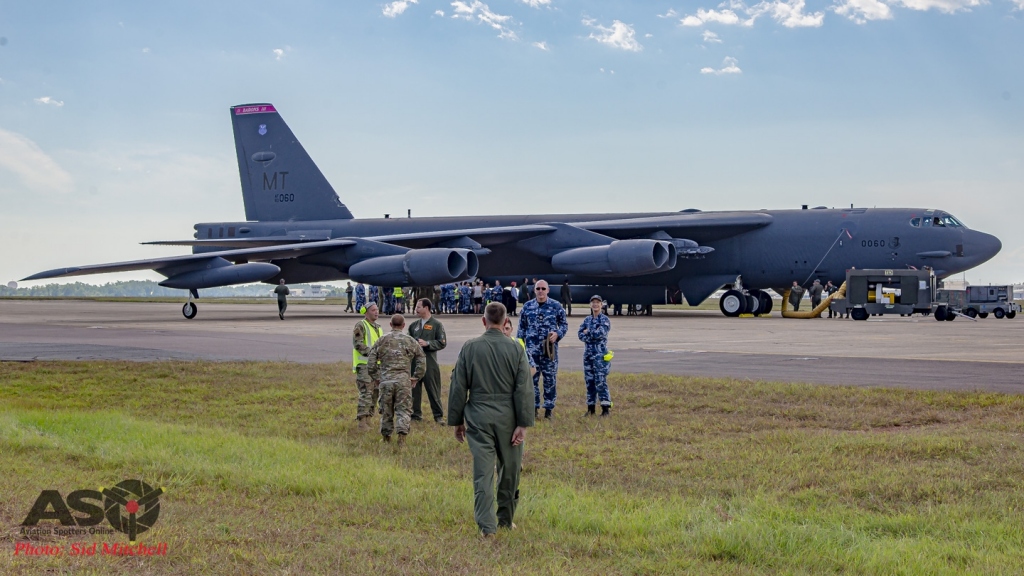


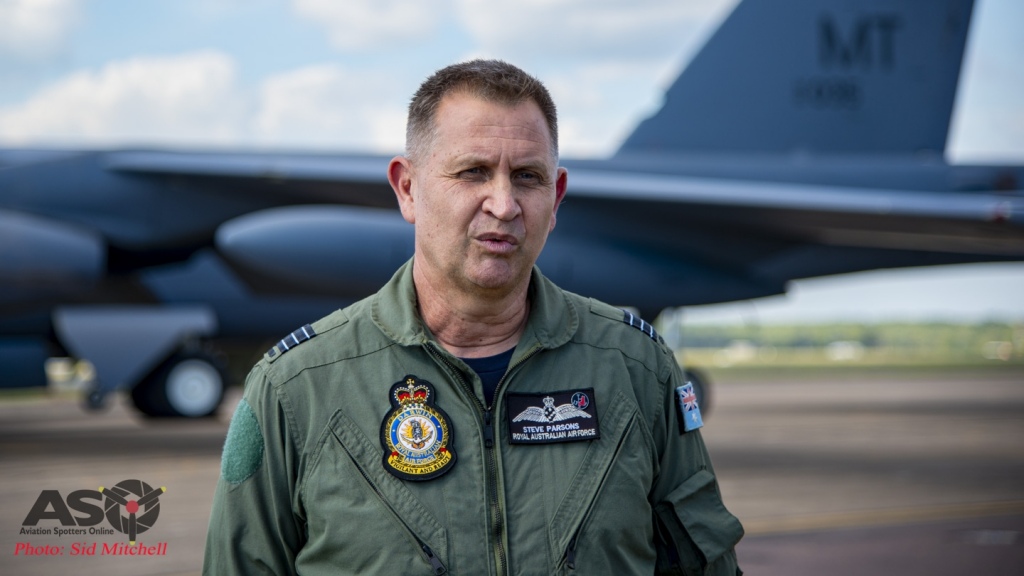

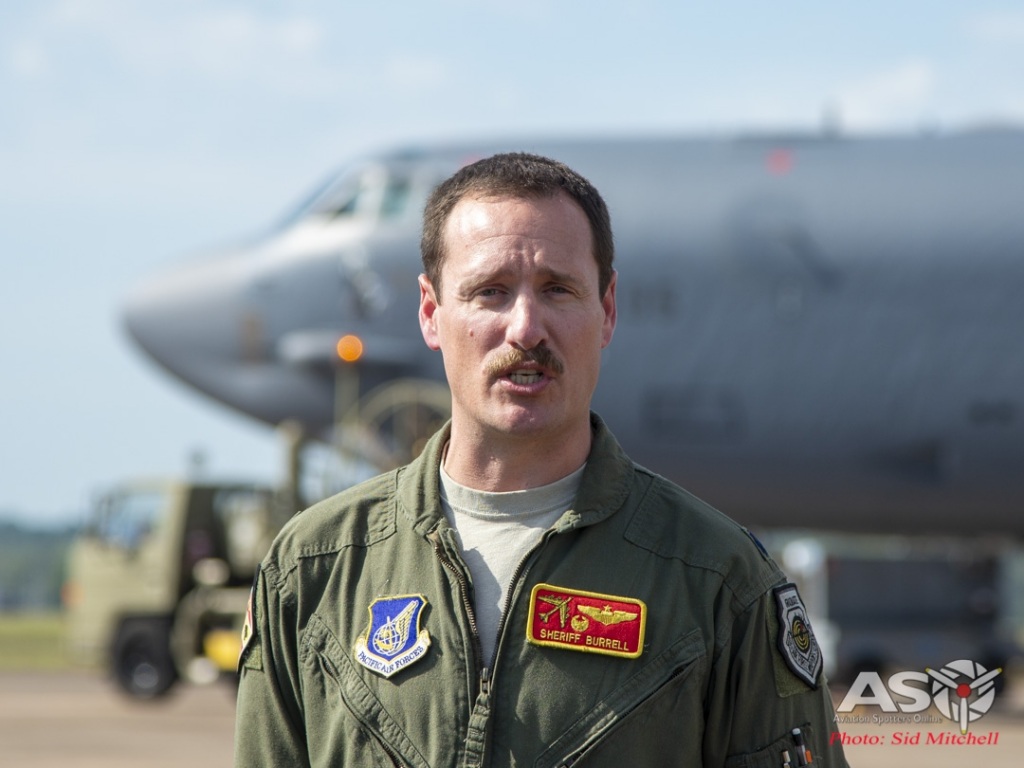
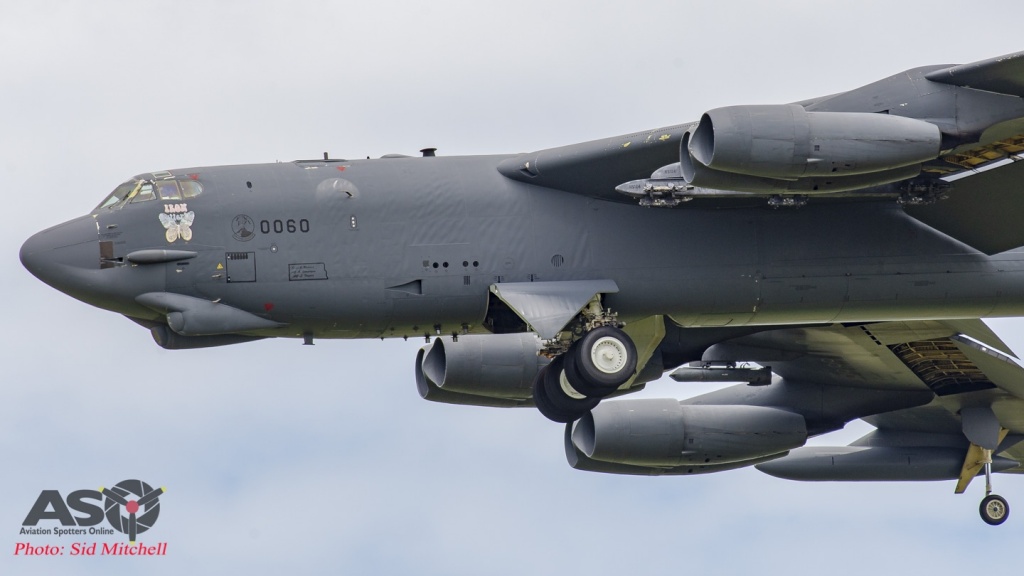

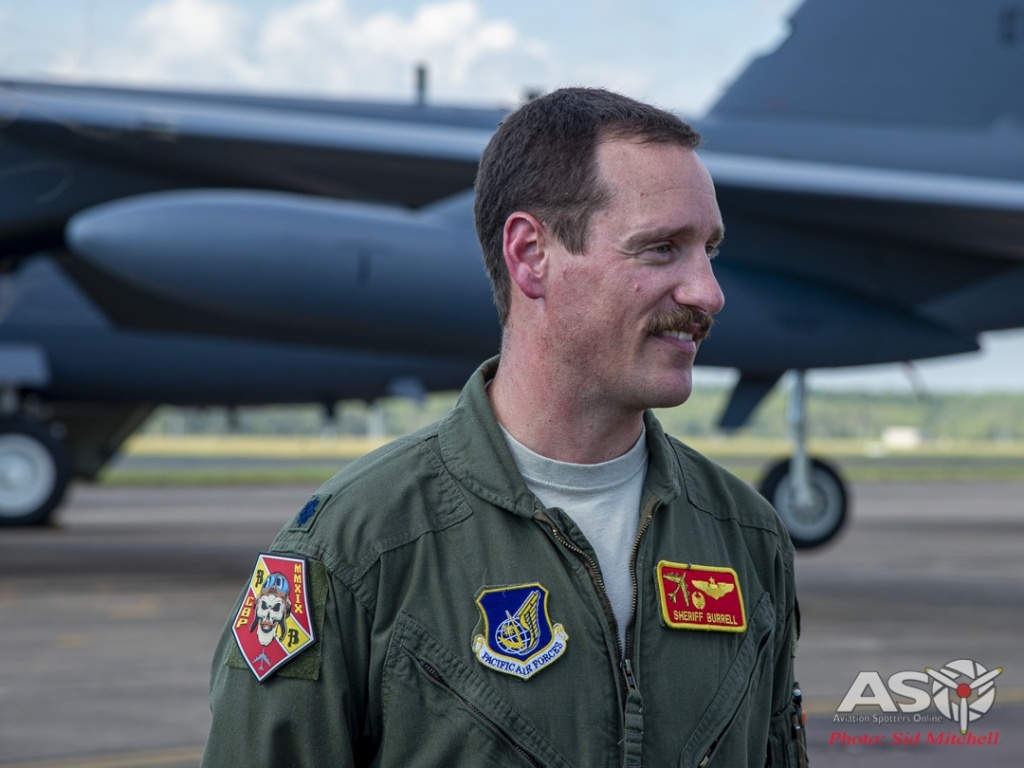

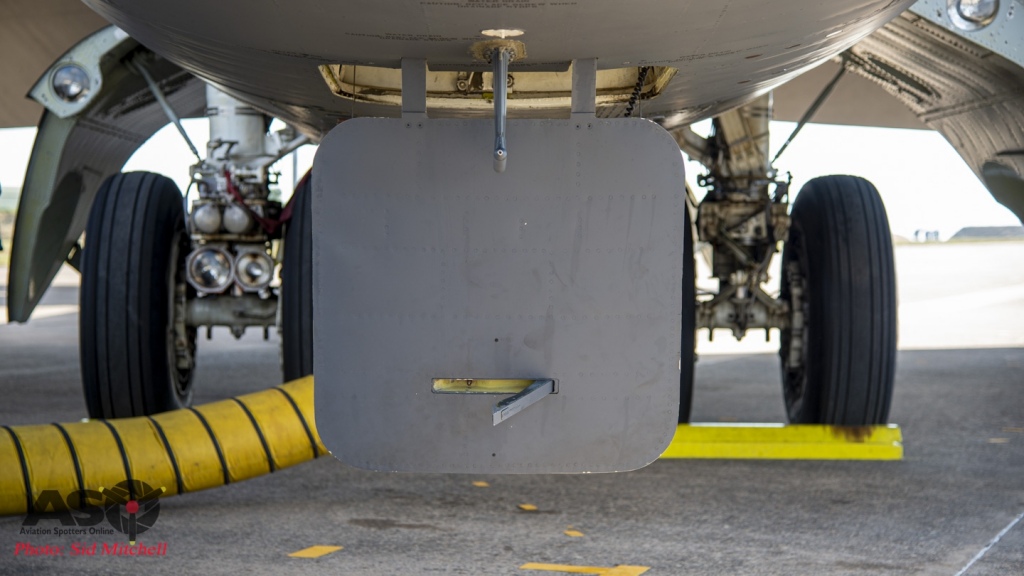
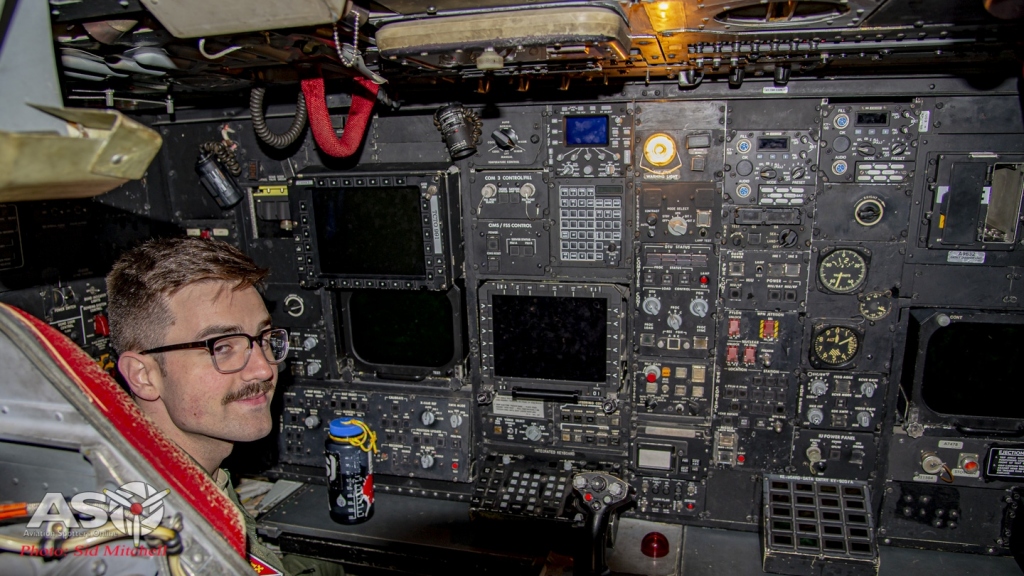

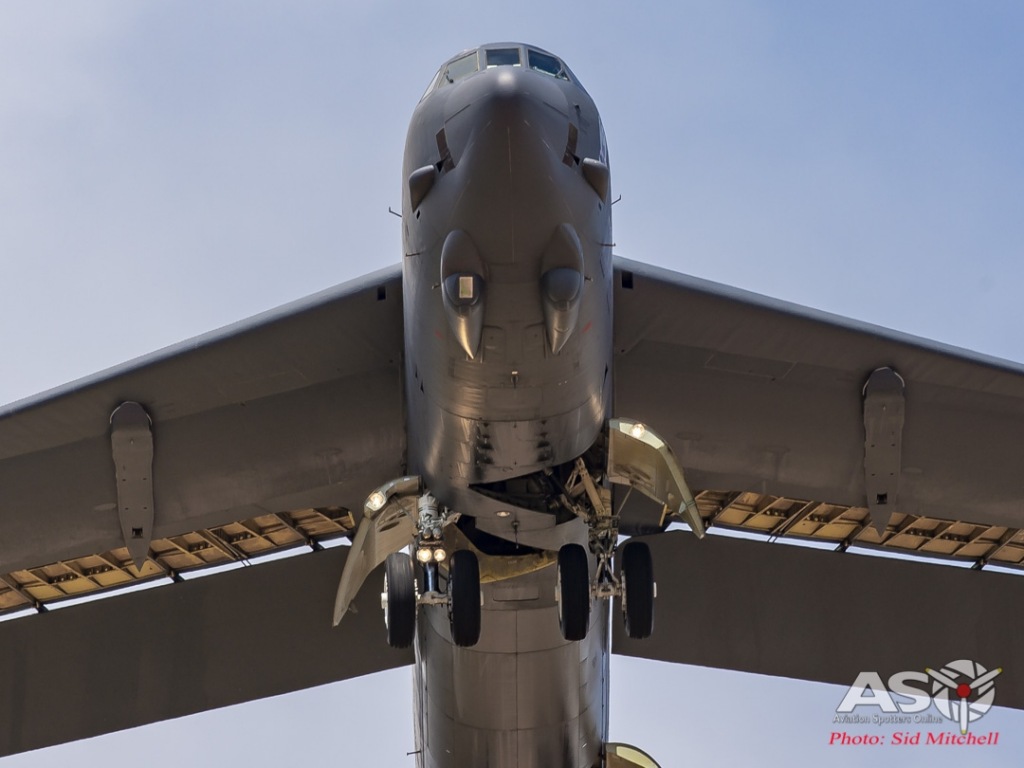


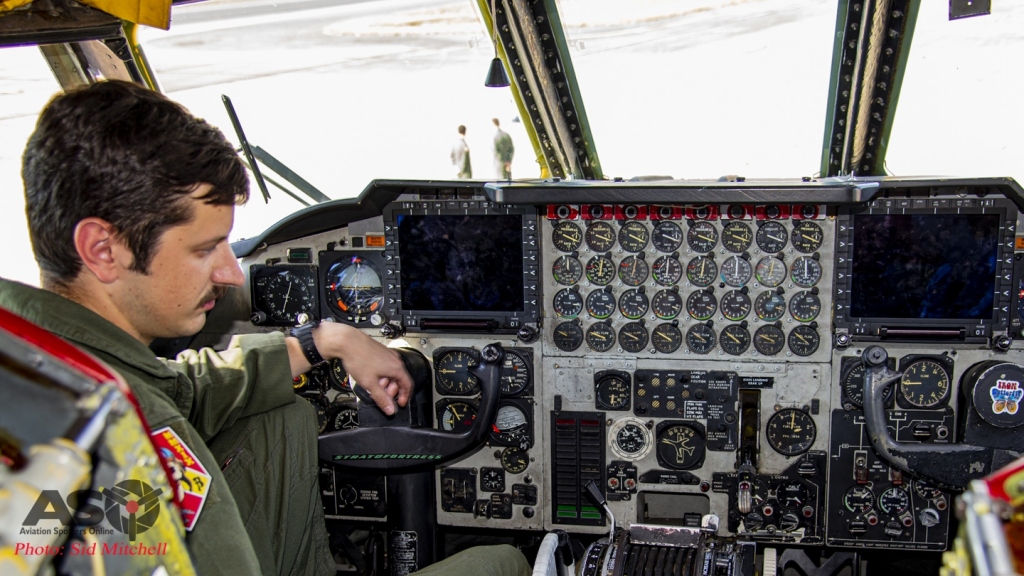
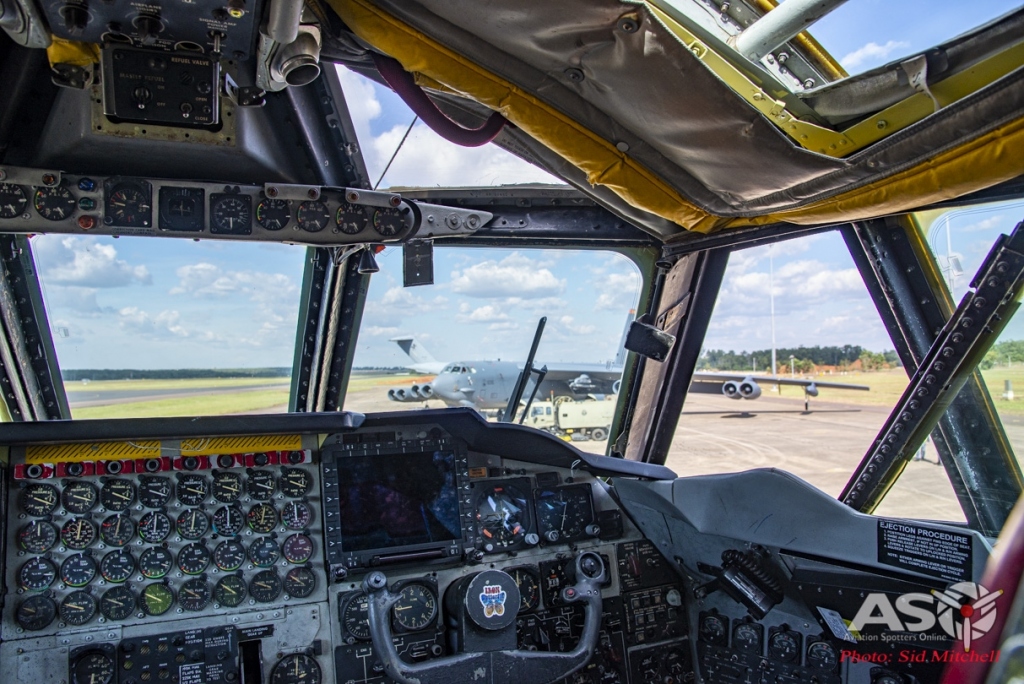
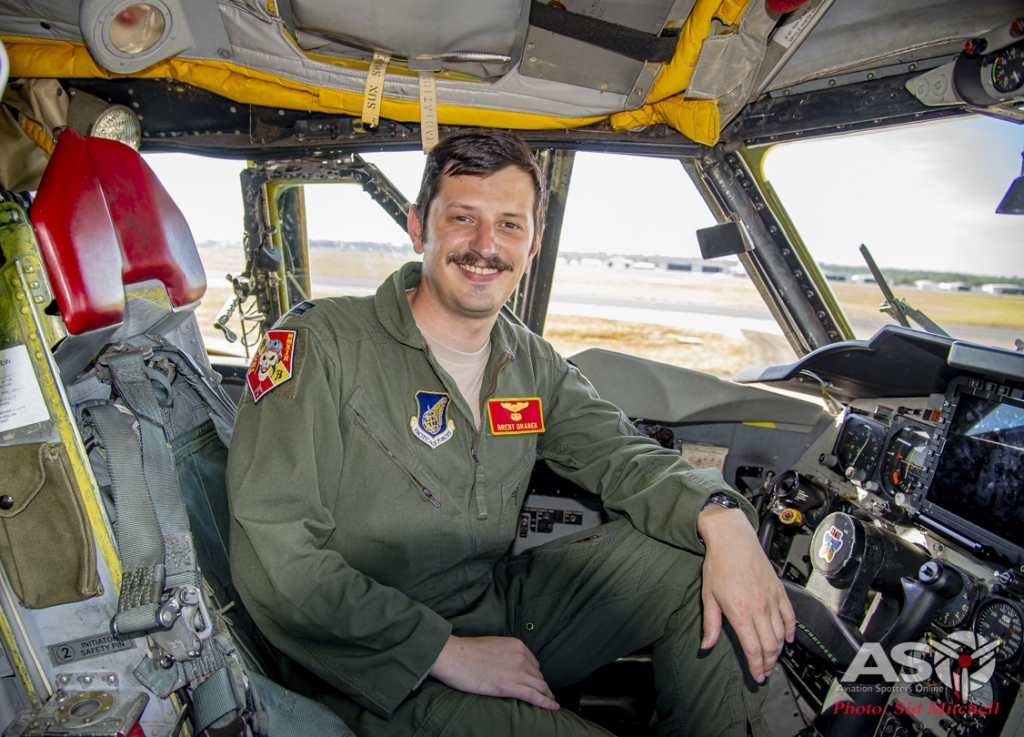
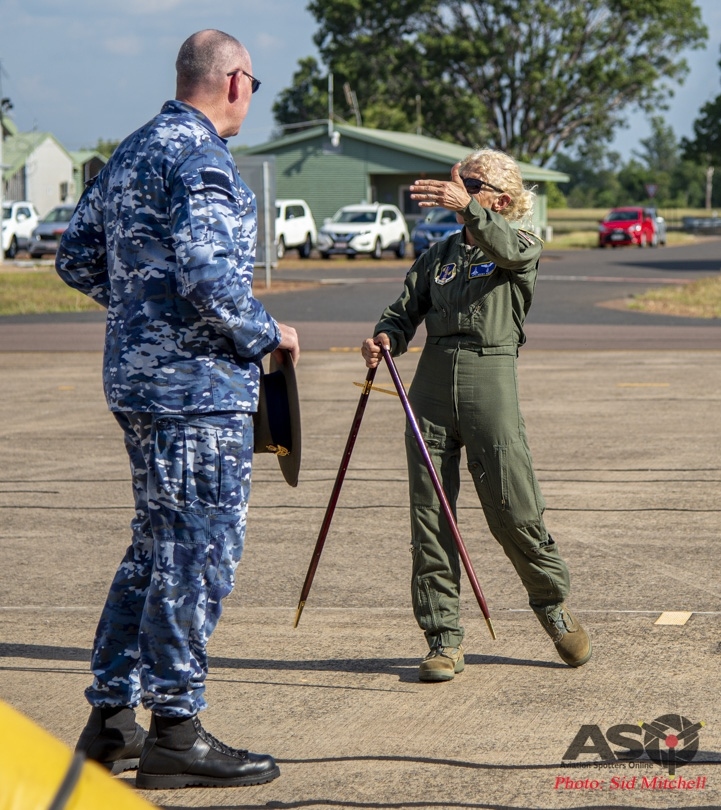
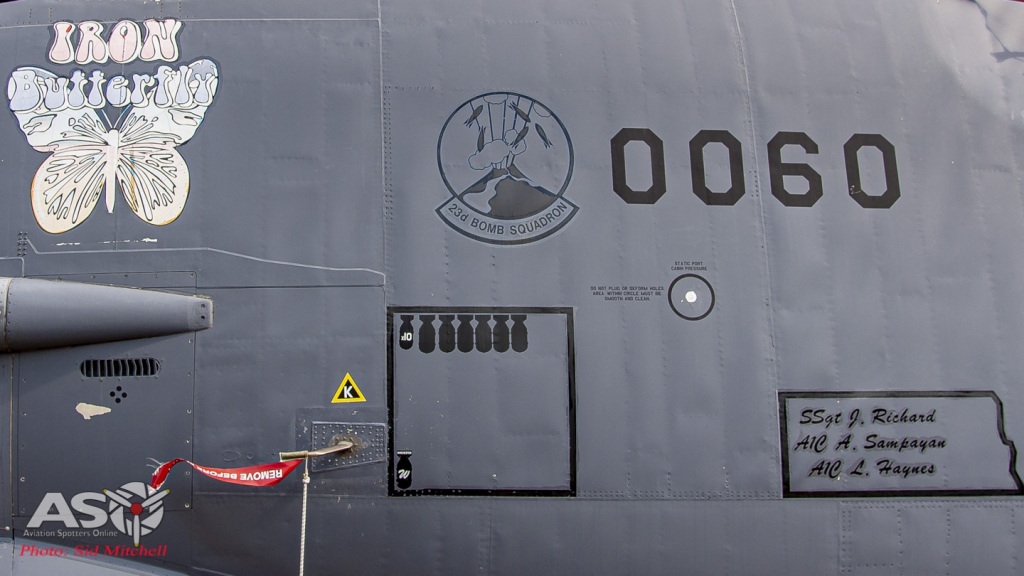

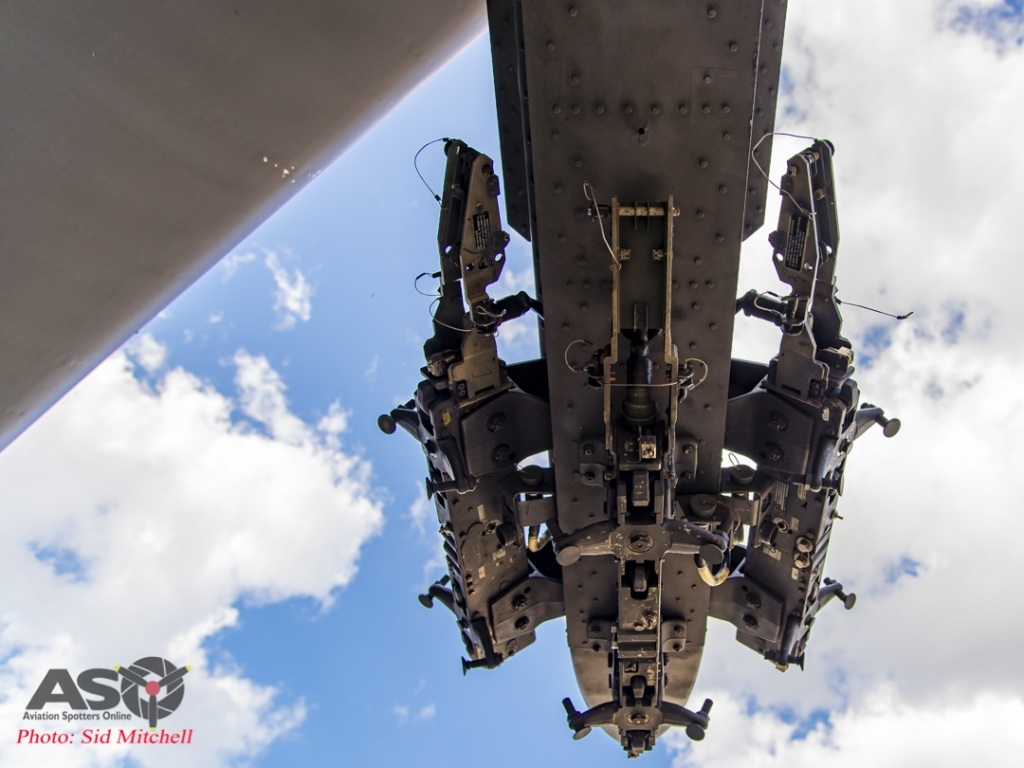


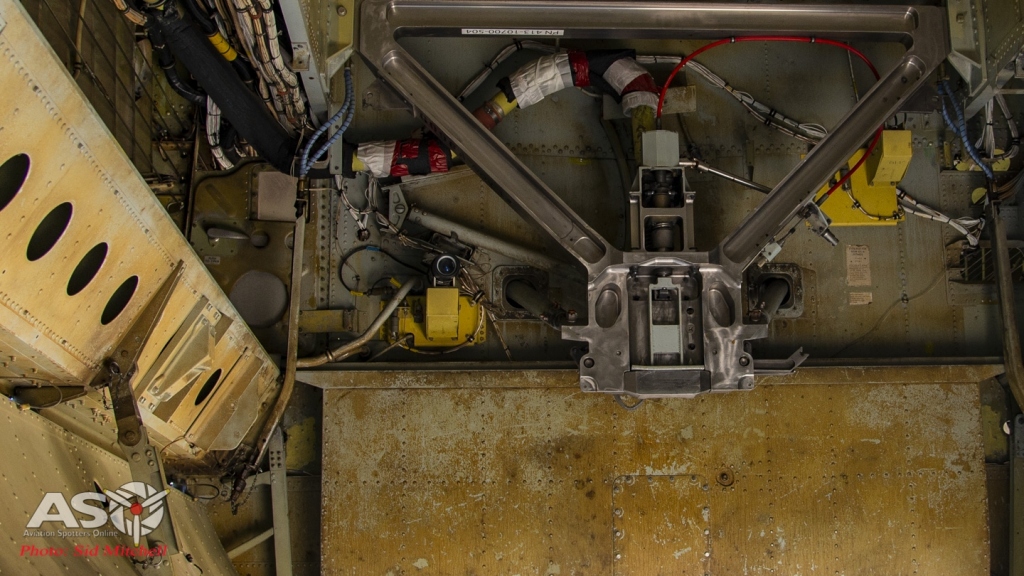


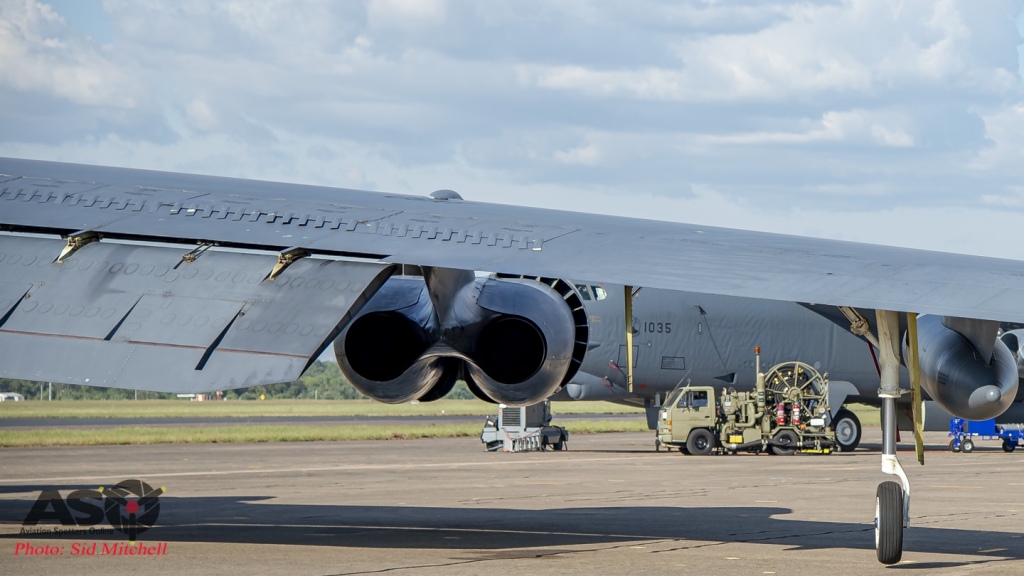

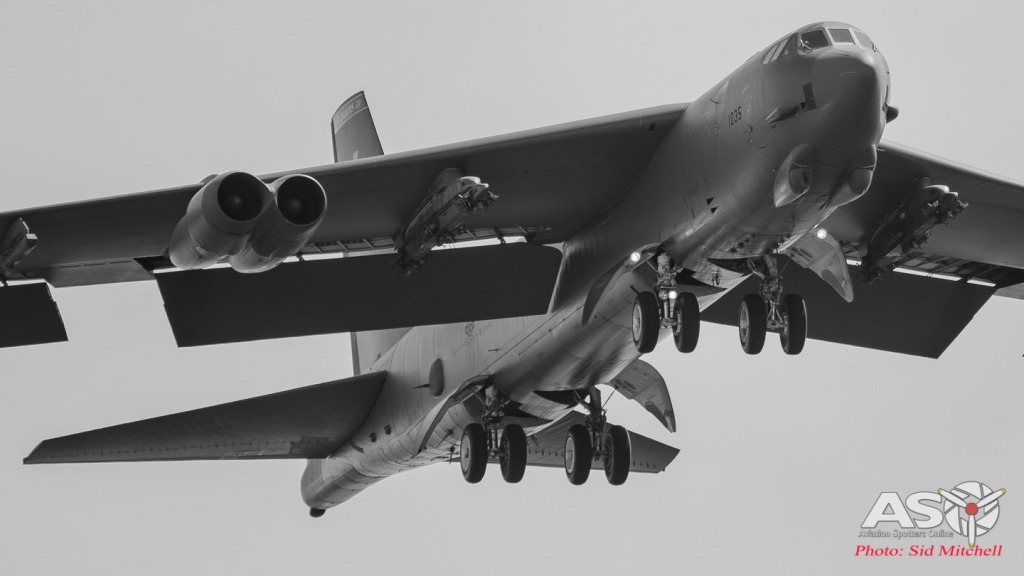
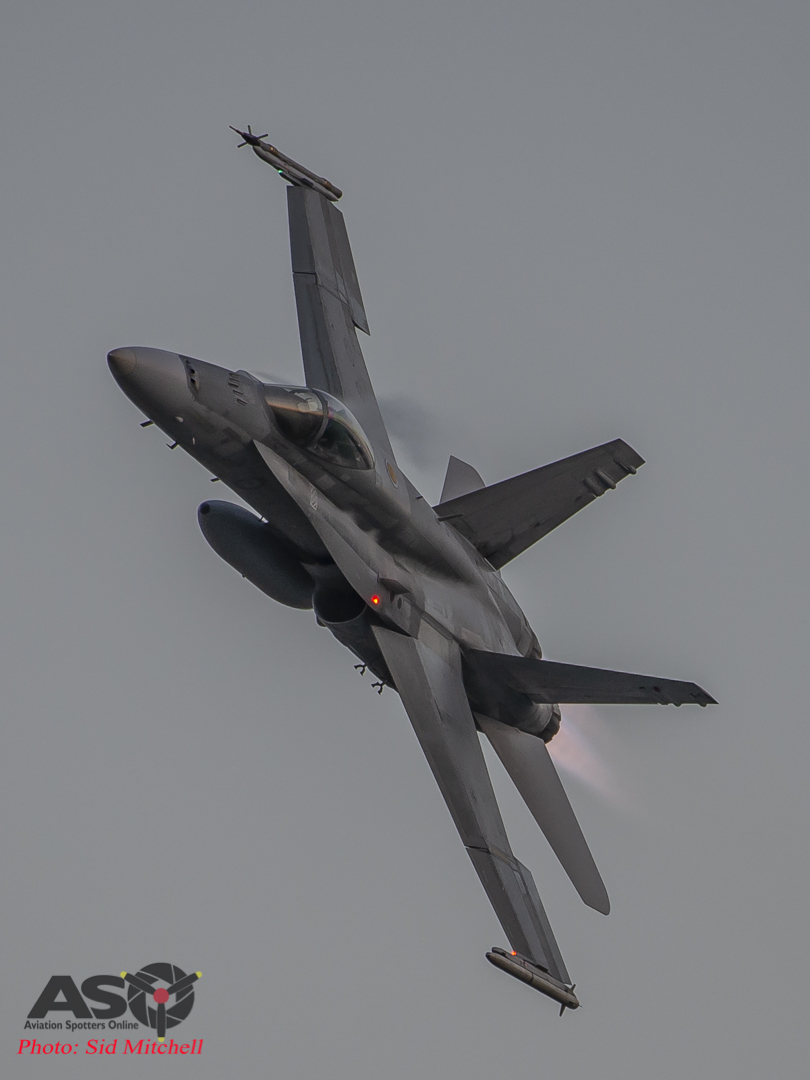
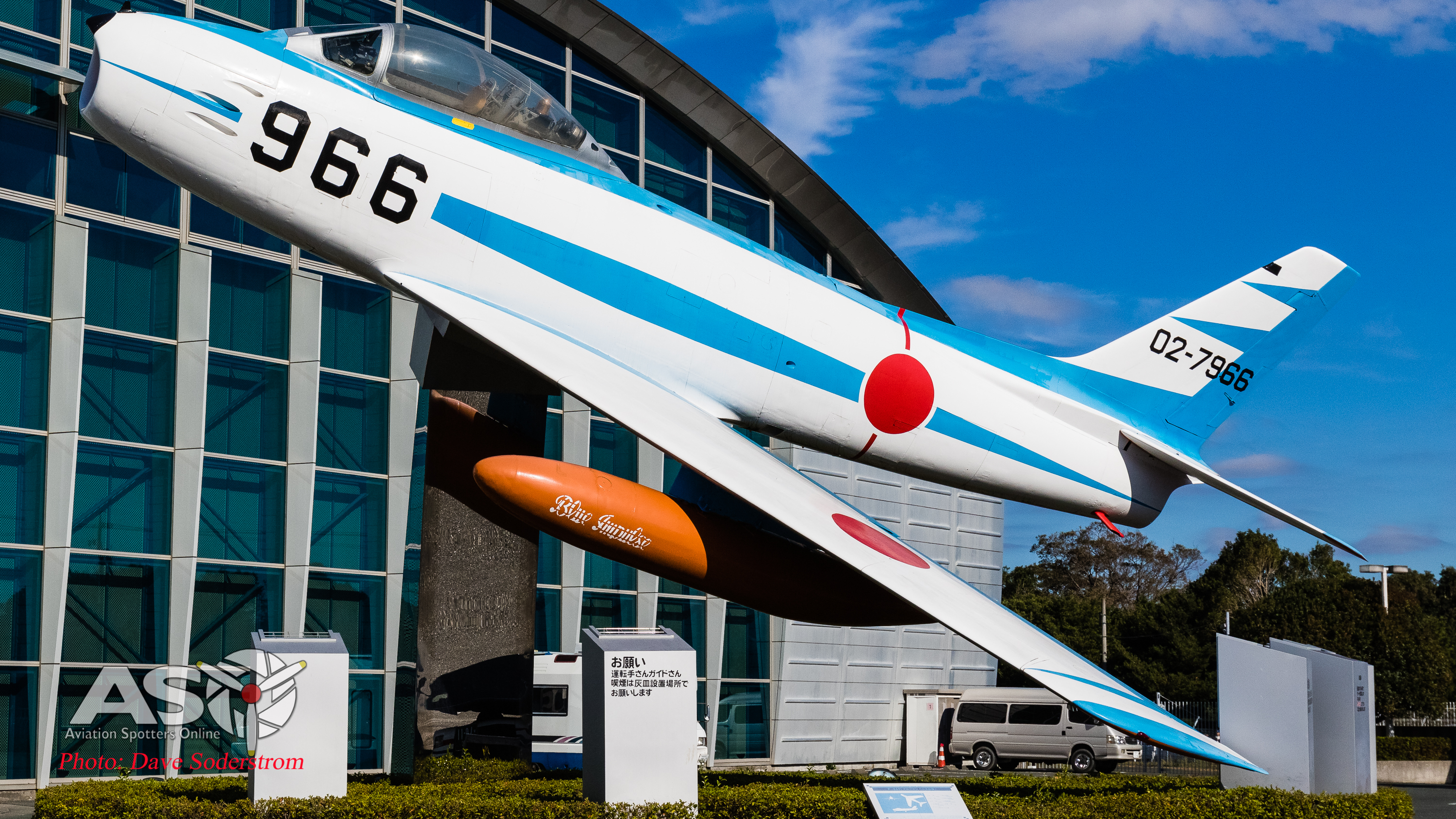

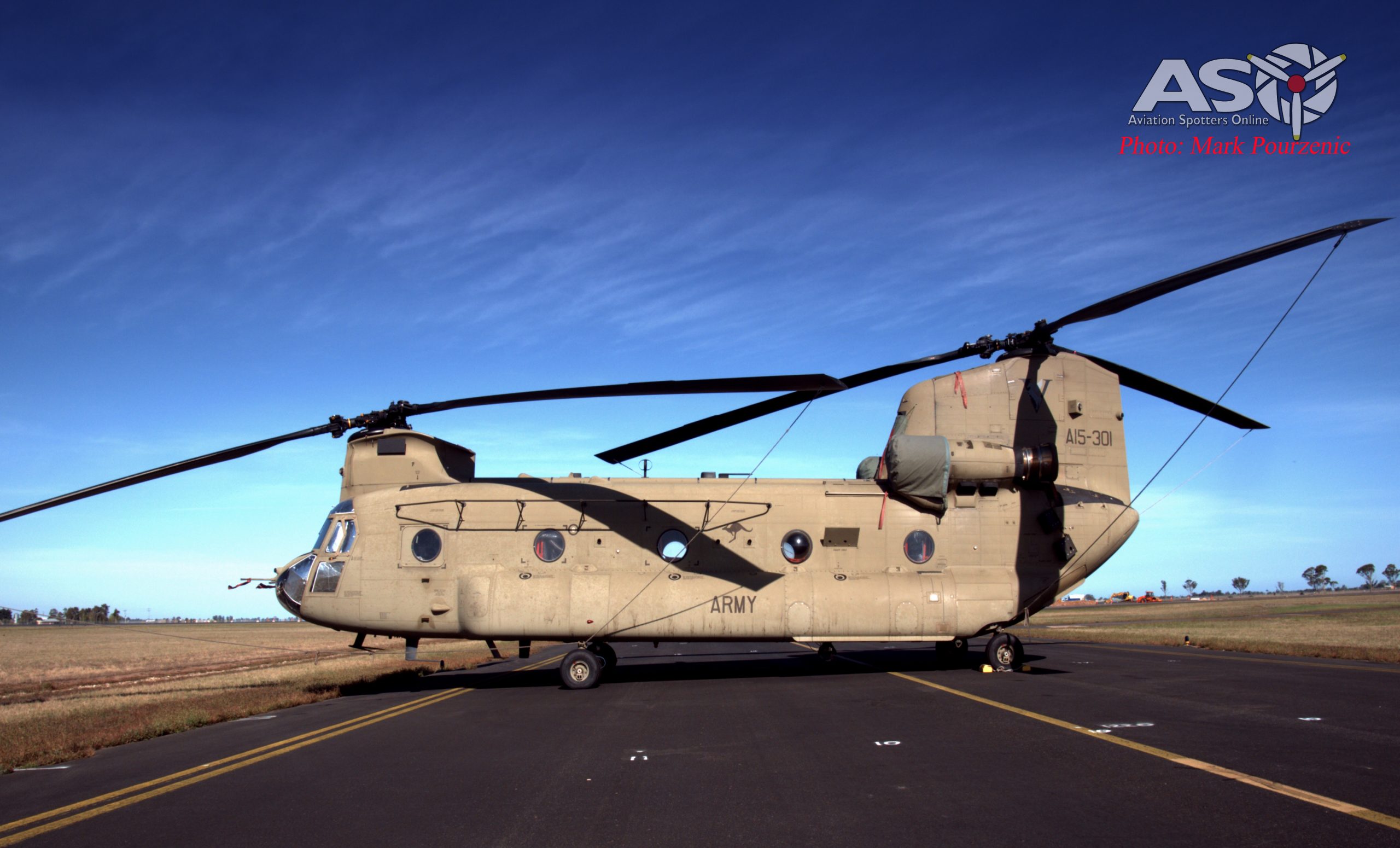





A most interesting word and picture tour of a sensational aeroplane
Thank you for your continued posting of informative articles.
Thank you John. Glad we can share an insight into the wonderful world of aviation- be it civilian or military. Cheers…Sid
Awesome article Sid!